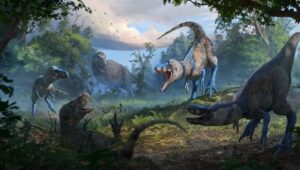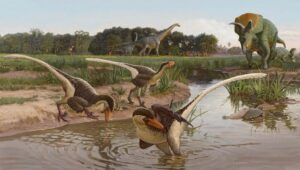A dig in Ethiopia yielded an obsidian mother lode of objects that may be tools or weapons. Whoever made them mastered advanced manufacturing techniques at an incredulously early date.
The find dates to 1.2 million years ago. It pre-dates the earliest instances of opportunistic tool usage by humans by over 500,000 years.
Opportunistic? Yes: Seasonal floods at the site left extraordinarily heavy deposits of obsidian, the researchers found.
Supply and demand
A study led by paleo archaeologist Margherita Mussi constructs a case that the site represents a type of “workshop” area where Stone Age hominins (not hominids) manufactured tools methodically. It contains 575 obsidian implements including 30 “handaxes.”

The team’s modeling showed the shaping techniques.
Shaped like teardrops, averaging about 11.5cm long and weighing about 0.3kg, the objects’ makers likely employed them for functions similar to modern axes: chopping, butchering, and excavating.
Identifying details of the creators themselves is tricky. But Melka Kunture, the site where they worked, is famous by proxy — it’s in the same river valley where scientists found Lucy’s remains in 1974.

The Melka Kunture site.
Melka Kunture and other digs like it stand testament to a key evolutionary step in human development. Many arguments exist that early human ancestors who made tools were just reacting to their environmental constraints, the study authors point out. As early as 1.2 million years ago, supply lines didn’t seem to exist. Instead, “multiple activities of everyday life were all uniformly conducted at the same spot.” The obsidian workshop suggests the site’s occupants were “taking advantage of new opportunities, and developing new techniques and new skills according to them.”
If that’s the case, it could offer insights into what set humans apart from the rest of our broad family tree.
Ancient hominins “are very often depicted as barely surviving, struggling with a hostile and changing environment,” Mussi told LiveScience. “Here we prove instead that they were clever individuals, who did not miss the opportunity of testing any resource they discovered.”
If that’s not human, I don’t know what is.






